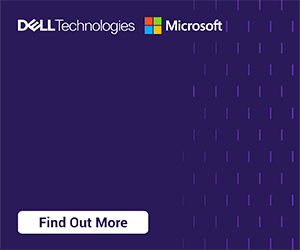Maintaining a modern server infrastructure is becoming a critical success factor for midsize companies in most every industry. End-user expectations in midsize organizations today have risen to the same level as end-users in large enterprises. Furthermore, unexpected outages and downtime still have a direct impact on revenue and customer satisfaction in all size companies — hence the need for modern server infrastructure.
IDC’s recent research, “Optimizing Performance with Frequent Server Replacements at Midsize Companies” *, found that midsize companies benefit financially from timely server replacements. However, IDC also found that most midsize companies still fall into the trap of neglecting timely server replacements, with more than half (54%) of midsize survey respondents reporting long replacement cadences of five or more years
IDC recognizes that maintaining a regular replacement cycle is not always easy or simple. Cost is often the primary challenge, as upgrading servers requires capital expenditures that involve budget allocation. The scheduling of the required resources often involves reallocating staff from other projects. This may lead to delays and hesitation in the upgrade cycle.
Yet despite the challenges, there are distinct benefits to end user customers to proactively maintain a modern server infrastructure:
• As the complexity within the server infrastructure is simplified, customer IT can reduce the amount of legacy hardware, tools, and processes
• Keeping servers up to date enables customer IT staff to take full advantage of enhanced management tools to drive efficiency and optimize systems to improve application performance
• Replacing servers ensures that infrastructure is tailored to current application requirements.
While servers can be expensive to procure and maintain, optimal replacement cycles can result in significant cost savings over time
The IDC research showed that midsize organizations benefit from timely server upgrades through reduced operational costs in the short/medium term and capital expenses in the long term. Midsize organizations that replaced their server infrastructure every three years reported a 25% reduction in server infrastructure-related costs and a 21% reduction in three-year operation costs. For these respondents, shorter replacement cadences led to a 21% reduction in datacenter-related capital expenses, a 20% reduction in datacenter-related operating expenses during the first year, and a 19% reduction in OPEX datacenter costs during subsequent years.
When all direct and indirect costs are considered, the cost savings resulting from a three-year replacement cycle surpass the cost savings gained with a six-year replacement cycle. On average, organizations with 250 employees that run 50 business applications on five servers save $260,000 ($51,582 per server) when replacing all their servers twice, rather than once, during a six-year period.
If you have customers that are running servers older than three years, Dell EMC PowerEdge servers are designed with key features that enable customer enterprises to transform their IT operations and infrastructure. The combined features and capabilities of PowerEdge servers and OpenManage systems management tools deliver time and resource savings in addition to significant direct and indirect cost savings.
You can learn more here about how to help them modernize their current infrastructures and realize these important cost savings.
*Source: Dell EMC Server Upgrade 2020 Research, IDC, 2020













